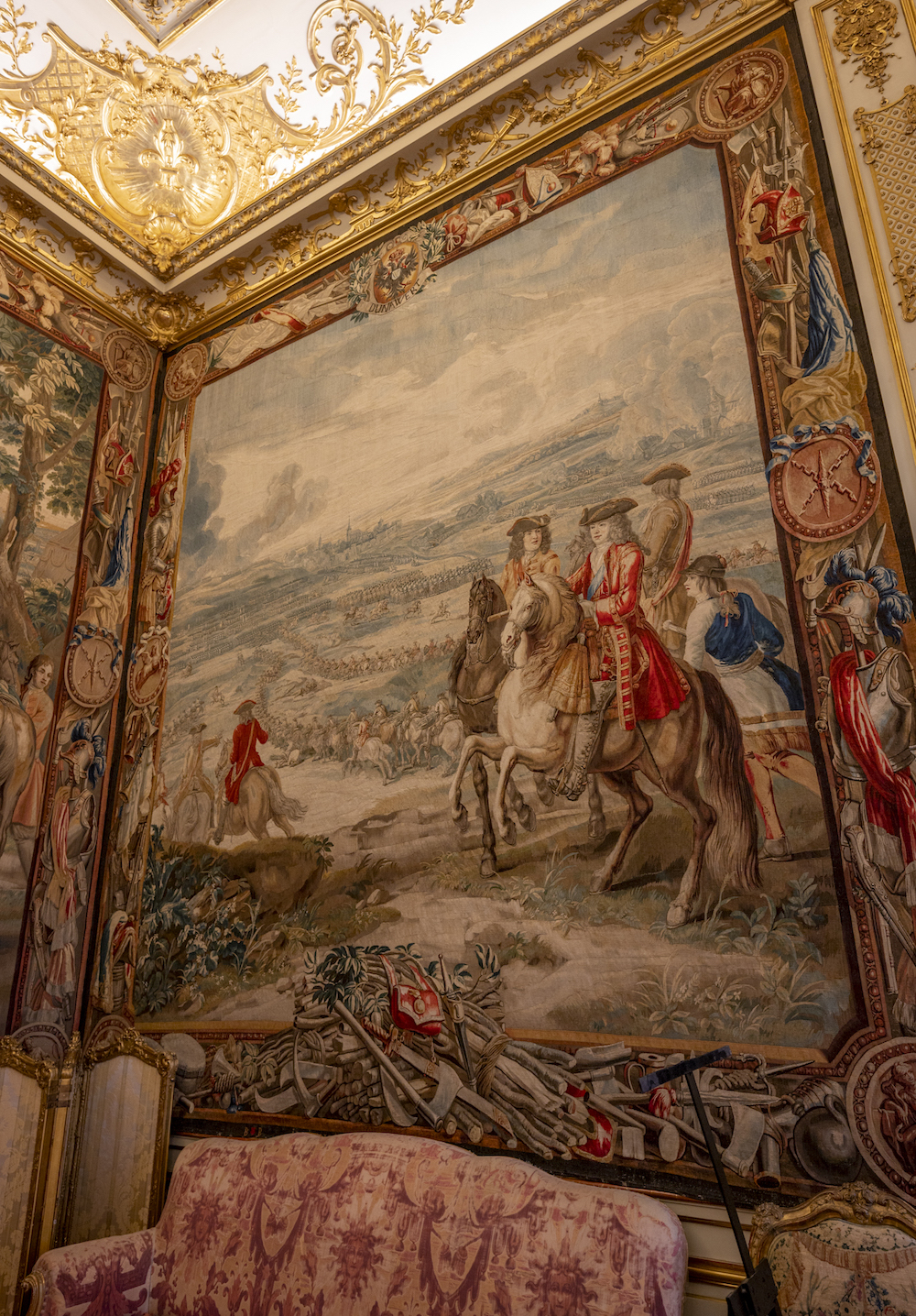Restored Schellenberg tapestry returns to Blenheim
 Visitors to Blenheim Palace in Oxfordshire will once again be able to marvel at the 300-year-old Schellenberg tapestry as it has been lovingly restored and returned to its home in the First State Room at the UNESCO World Heritage Site.
Visitors to Blenheim Palace in Oxfordshire will once again be able to marvel at the 300-year-old Schellenberg tapestry as it has been lovingly restored and returned to its home in the First State Room at the UNESCO World Heritage Site.
Schellenberg is one of the tapestries commissioned by the 1st Duke of Marlborough between 1706-1710. ‘The Victories series’ was the last set he commissioned and comprises 10 tapestries, 9 of which are on display in the Palace State rooms, each depicting a pivotal battle in the War of Spanish Succession.

The Schellenberg tapestry has been conserved by Emma Telford, textile conservator and took just over 12 months to complete.
The intricate process includes having the old lining being removed and the metal fastenings taken off the edges, followed by the tapestry being ‘washed’ in a large bath to remove the dirt. The conservator then rebuilds any silk or wool thread that has degraded over time and repairs any slits. The tapestry is then re-lined and velcro is attached to the edges and the walls for re-hanging.
Kate Ballenger, Keeper of Palace and Collections at Blenheim Palace said: “The tapestry conservation program at Blenheim Palace began in 2008 and the conservation and return of the Schellenberg marks the 20th tapestry conservation in the last 15 years which is a huge milestone for us.

“At over 300 years old, the tapestries are remarkably well preserved. They do however require conservation treatment to secure their existence for future generations, as abrasive dust and dirt carried in the air can accumulate amongst the threads obscuring the designs and causing damage. Light exposure over time is also damaging to textiles, not to mention the stress they’re under simply hanging on the wall, supporting their own immense weight.
“Not only are the collections of tapestries at Blenheim Palace a piece of history because they were commissioned by the 1st Duke of Marlborough, but they also serve as a historically factual record of British military history, depicting significant events during this influential period.”
A tapestry woven in Brussels by Judocus de Vos based on cartoons by artist Lambert de Hondt, Schellenberg is a municipality in the lowland area of Liechtenstein, on the banks of the Rhine and the historic battle occurred on July 2nd, 1704. Great care was taken throughout in the accurate depiction of the military operations; the topography; the uniforms and equipment of the troops, as well as the portraits of the main figures. This is due to the talents of both the artist Lambert de Hondt and the master weaver Judocus de Vos, accurately portraying the landscape and portraits in magnificent detail provided by the 1st Duke of Marlborough.

